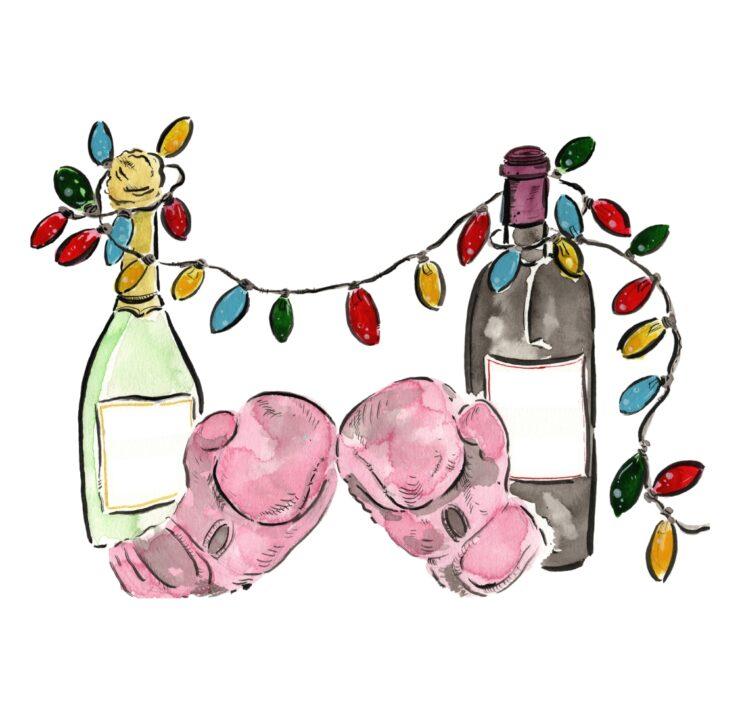This article is brought to you in partnership with Vinovest
So, you’re interested in wine investing but don’t know where to start? That’s alright. While the ultra-wealthy have profited from wine buying and selling for centuries, investing in a wine portfolio is a recent phenomenon for everyone else.
One note before we dive in: the perfect wine portfolio is subjective. A portfolio that matches your unique goals and time horizons might not work for someone else. We’ve done our best to provide sample portfolios that cater to as many people as possible.
Top Performing Wine Regions
All wine regions are not created equal. Even with fine wine outperforming numerous asset classes, some regions are shining brighter than others. Distinguishing good from great regions makes it easier to target certain wines when you begin investing.
Here’s a breakdown of returns by different wine regions.

This chart is interesting for several reasons. First, Burgundy and Champagne have outclassed the field time and again. One year, five years, 15 years – they are always first and second. (In some cases, it’s not even close.)
Second is the performance (or lack thereof) from Bordeaux. For wine newbies, Bordeaux is a mecca for wine lovers. Once upon a time, it accounted for 96% of the wines traded on the secondary market by value. However, broadening consumer tastes and an increasingly competitive wine market have taken bites (or should I say “sips”) out of the region’s dominance.
Wine Investing with $1,000
You know which wine regions have performed the best historically. Now it’s time to put that knowledge to the test. Let’s start by building a wine portfolio with roughly $1,000.
Your best bet is to invest in single bottles. For context, wine is typically purchased by the case (6 bottles per case). Building a diversified portfolio is tough when investment-grade cases start from around $600 to $1,000. Using a platform like the Vinovest Marketplace will allow you to diversify without costing you an arm and a leg.
Sample Wine Portfolio for $1,000
Ready to build your wine portfolio? Let’s do it.
Below are four bottles worthy of your first wine portfolio. Most of these options are on the younger side. That makes them ideal for anyone who wants to hold their wines for ten or more years. If you want a shorter holding period, select slightly older vintages.

The 2008 Dom Pérignon and 2018 Opus One are the two most recognizable names in this sample portfolio. The brand cachet makes them highly desirable, even if they’re not as rare as other investment-worthy wines. Plus, they have glowing reviews from critics. According to Wine-Searcher.com, 2008 Dom Pérignon has the highest average score from critics in the Champagne’s 101-year history. Meanwhile, 2018 Opus One earned a 99 from James Suckling and a 98 from Robert Parker’s Wine Advocate.
The 2016 Domaine Drouhin-Laroze Bonnes Mares Grand Cru is a hard-to-find Burgundy from a spectacular vintage. The estate only made about 1,500 cases that year. The fact that the Pinot Noir comes from the most prestigious terroir classification in Burgundy doesn’t hurt either.
Our final selection, 2018 Fontodi Flaccianello della Pieve Toscana IGT, is an opulent Sangiovese from Tuscany. It notched a perfect score from wine critic Antonio Galloni, who wrote, “I absolutely loved it.” With entrancing aromatics and a cellar-worthy structure, this red wine will age well for up to 30 years.
Wine Investing with $10,000
Here’s where things start to get interesting. You can easily achieve a high appreciating and diversified wine portfolio with $10,000. The question is whether you want to invest in single bottles or cases.
To that, we say, why not both? For our sample portfolio, we’ve mixed bottles and cases across four regions – Burgundy, Tuscany, Champagne, and California. That way, you can balance pricey, high-end bottles with more affordable cases.
Sample Wine Portfolio for $10,000
One star of this collection is the 2018 Joseph Phelps Insignia magnum. It was California’s first blend of traditional Bordeaux grapes released under a proprietary name in 1974. Today, Joseph Phelps Vineyards releases 18,000 bottles of Insignia per year. However, only a fraction of those are magnums. The unique format makes it a highly coveted wine.

The other star is 2019 Domaine Anne François Gros Richebourg Grand Cru. In 1988, Gros inherited ten acres of vineyards in Echézeaux and Richebourg. A few years later, she married François Parent, a 12th-generation vigneron whose forbears supplied wine to Thomas Jefferson. (Yes, that Thomas Jefferson). The blend of tradition, talent, and terroir makes this Burgundy an increasingly sought-after red wine among collectors and connoisseurs.
The rest of this sample portfolio contains heavyweights from Italy and France. Sassicaia is the original Super Tuscan and a personal favorite of Beyoncé. Krug is the master of blended Champagne, sometimes blending more than 100 different vintages into a single wine.
Wine Investing with $50,000
If you’re investing with $50,000, this is where the fun begins. Almost every rare and expensive wine is available to you, including first-growth Bordeaux and California Cabs. That’s not all. You can thoroughly diversify your portfolio across regions and time horizons. Put another way: you are in the driver’s seat.
Sample Wine Portfolio for $50,000
Our sample wine portfolio covers three regions – Burgundy, Champagne, and California. If one region experiences a sharp increase or decrease in demand or price, it won’t impact the rest of your portfolio.

All of the wines here will mature at different times. For instance, 2003 Dom Pérignon P2 has a hold time of zero to five years. Meanwhile, the 2018 Continuum will age for more than 15 years. The variation means you won’t have to sell your entire portfolio at once.
The 2005 Domaine Armand Rousseau Chambertin Grand Cru is the crown jewel of this sample portfolio. The 2005 vintage was one of the best ever in Côte de Nuits. However, Armand Rousseau only produced 1,300 cases of this coveted pinot noir. Combine that scarcity with insatiable demand, and this gem has increased 248.1% in value over the last five years.
The 2009 Jacques Selosse Millésime is another big-name wine only available for clients investing in the $50,000 range. The Champagne house produces a mere 500 cases of this single vintage blanc de blanc per release. The house is also known for exacting standards that earned the Champagne a 97-point rating from Robert Parker’s Wine Advocate. As a result, 2009 Jacques Selosse Millésime has appreciated 151.1% in the last year. (No, that is not a typo.)
The Bottom Line
You can build a high appreciating wine portfolio no matter your budget. Whether you have $1,000, $10,000, or $50,000, there are investment-grade wines to fit your goals and time horizons. If you’re ready to get started, start investing at Vinovest today.
Want to learn more? Check out our piece on what makes certain wines investment-grade. There we break down the essential factors that make select wines worthy of your portfolio.









